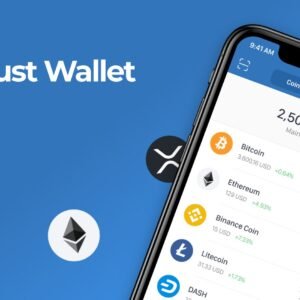Introduction
In a rapidly evolving Web3 landscape, Hedera launched frictionless airdrops and dynamic NFTs, ushering in a new era of digital asset distribution and interactive tokenization. This development marks a significant leap forward not only for the Hedera ecosystem but also for the broader blockchain and NFT community.
While airdrops and NFTs are familiar concepts to most crypto enthusiasts, Hedera’s unique approach leverages its high-performance public ledger, the Hedera Hashgraph, to deliver both innovations in a scalable, eco-friendly, and user-centric way.
Whether you’re a developer, investor, or curious explorer in the blockchain space, understanding the implications of Hedera launched frictionless airdrops and dynamic NFTs is crucial. In this article, we’ll explore what these terms mean, how they work within the Hedera network, their benefits over traditional methods, and what this could mean for the future of Web3.

What Are Frictionless Airdrops?
The concept of airdrops isn’t new. Projects frequently use airdrops to distribute tokens to users, either to promote a launch, reward loyalty, or incentivize engagement. But traditional airdrops often come with friction — high gas fees, complex wallet setups, or convoluted claiming processes. That’s where Hedera Launched Frictionless Airdrops and Dynamic NFTs steps in with a game-changing model.
When Hedera launched frictionless airdrops and dynamic NFTs, it introduced a new kind of airdrop system that eliminates the barriers traditionally associated with token distributions. Leveraging Hedera Token Service (HTS), frictionless airdrops allow developers and projects to send tokens directly to users with minimal fees, near-instant finality, and enhanced usability.
Key Features of Hedera’s Frictionless Airdrops:
-
No Wallet Setup Complexity: Users don’t need to pre-register or set up complex wallets. They can receive tokens using their Hedera account IDs or aliases.
-
Low to No Fees: Thanks to the Hedera network’s efficiency, transaction costs are negligible — making it cost-effective for large-scale distributions.
-
Real-Time Distribution: Tokens are sent in real time with finality in seconds, a massive improvement over Ethereum or other chains where transactions can remain pending or fail due to gas price fluctuations.
-
Spam Protection: Hedera includes built-in safeguards that prevent spamming accounts with unwanted tokens, maintaining user trust and cleanliness of accounts.
By streamlining the entire process, the way Hedera launched frictionless airdrops and dynamic NFTs could set a new standard for Web3 user acquisition and retention strategies.
Understanding Dynamic NFTs
Non-fungible tokens (NFTs) started as simple static images stored on-chain or off-chain. But static NFTs are only the beginning. The future lies in dynamic NFTs — tokens that evolve, update, and respond to external stimuli or internal user actions. Dynamic NFTs can change metadata, visuals, or utility based on various triggers, making them ideal for gaming, digital identity, rewards, and more.
With the recent update where Hedera launched frictionless airdrops and dynamic NFTs, Hedera brings dynamism to tokenized assets through native support for metadata mutability and smart contract integration on the Hedera network.
How Dynamic NFTs Work on Hedera:
-
State Change Mechanisms: Smart contracts can be programmed to modify NFT metadata based on user interactions, achievements, or real-world events.
-
Performance Efficiency: Even with dynamic updates, NFTs on Hedera benefit from high throughput and low costs, making real-time changes viable at scale.
-
Use Case Flexibility: Whether for adaptive game items, evolving avatars, or tiered membership access tokens, dynamic NFTs provide a flexible framework.
For example, imagine a game item NFT that upgrades based on a player’s progress or a digital badge that evolves as a user engages more deeply with a platform.
These aren’t just cool features; they deepen engagement and provide tangible user value — and they’re now easier to implement than ever because Hedera launched frictionless airdrops and dynamic NFTs.
Real-World Applications and Benefits
The dual innovation of frictionless airdrops and dynamic NFTs opens doors across industries. From gaming to loyalty programs, and from decentralized identity to content creation, businesses can now interact with users in more meaningful and streamlined ways.
Gaming and Metaverse Integration
Gaming studios can distribute in-game assets directly to players as NFTs without worrying about network congestion or fees. Plus, those assets can evolve over time — a sword gets stronger as you defeat more enemies, or a pet NFT gains traits as you train it. All of this is made possible and scalable thanks to the infrastructure underpinning the fact that Hedera launched frictionless airdrops and dynamic NFTs.
Loyalty and Engagement Systems
Brands can airdrop dynamic NFTs to customers that change based on engagement levels, purchase history, or social sharing. Think of a digital rewards card that unlocks perks as you spend — all without users needing to touch a complicated DeFi wallet.
Education and Certifications
Institutions can issue dynamic NFT certifications that evolve to include new credentials, continuing education credits, or expiration dates. Because Hedera launched frictionless airdrops and dynamic NFTs, these certifications can be distributed globally in seconds, cost-effectively, and without the risk of forgery or tampering.
Developer Experience and Ecosystem Growth
For developers, integrating frictionless airdrops and dynamic NFTs into their dApps or platforms has never been easier. Hedera offers robust SDKs, APIs, and a growing suite of developer tools to facilitate seamless integration.
Why Developers Are Flocking to Hedera:
-
Simple APIs and SDKs: The Hedera SDK supports JavaScript, Java, Go, and other major languages, reducing the learning curve.
-
Event-Based Triggers: With smart contract support, developers can use event listeners to update NFTs dynamically or automate token distributions.
-
Scalable Architecture: Hedera Launched Frictionless Airdrops and Dynamic NFTs Hashgraph consensus enables throughput of over 10,000 transactions per second — making even the most complex NFT use cases viable.
-
Sustainability: Built on a carbon-negative infrastructure, developers can create responsibly, an increasingly important factor for users and stakeholders alike.
The development community’s response to the fact that Hedera launched frictionless airdrops and dynamic NFTs has been overwhelmingly positive. New projects are being launched, existing ones are migrating to Hedera, and the ecosystem is growing at an accelerating pace.
Conclusion
As blockchain technology matures, innovation no longer lies just in creating new coins or flashy art NFTs. The real progress happens when user experience improves, barriers to entry are removed, and technology becomes truly dynamic and responsive. That’s precisely what’s happening now that Hedera launched frictionless airdrops and dynamic NFTs.
These new capabilities are more than just technical features — they represent a shift toward a more interactive, accessible, and scalable Web3. Whether you’re a developer building the next breakout dApp, a brand looking to engage customers in new ways, or a user wanting a more intuitive blockchain experience, this is your sign to pay attention to what Hedera is doing.
We want to hear from you! What use cases are you most excited about? Have you tried out Hedera’s airdrops or dynamic NFTs yet? Drop your thoughts in the comments below and let’s keep the conversation going.






